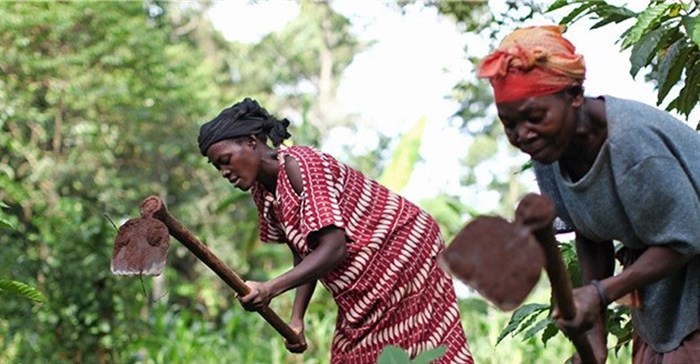Stakeholders in land reform held a roundtable session to discuss possible scenarios as pressure mounts for the acceleration of the land reform programme. The roundtable was hosted by the Vumelana Advisory Fund, a non-profit organisation that helps beneficiaries of the land reform programme put their land to productive use by establishing commercially viable partnerships between beneficiary communities and investors, and investors.

Land Reform Futures
Discussions focused on four land reform scenarios that can possibly unfold in South Africa over the next 15 years. The Land Reform Futures or Scenarios were developed over a period of two years by 40 people who approach land reform from widely differing perspectives: policy makers and administrators, traditional leaders, communal property institution leaders, activists, business people, academics. and consultants.
Speaking at the roundtable, Brian Whittaker, director and strategy advisor at Vumelana Advisory Fund explained that the scenarios are not predictions or proposals. They merely provide a perspective on how things can possibly pan out. “The scenarios are not exhaustive, but tell stories about how South Africans might respond to the challenges and what the outcomes of their responses can be,” he said. “In the case that one scenario is applied, it provides insights on what could possibly happen as a consequence to that scenario, and this speaks to the economic and social perspectives.”
The scenarios can be used by any institution as a reference point in planning around land reform. They present an inclusive and structured way in which to look at what could possibly happen and can, therefore, help with decision-making and planning in the land reform space, he added.
The four land reform scenarios

Land Reform Futures
Scenario 1, Connection and Capture: paints a picture of what can happen should government allocate land arbitrarily to shore up support ahead of the 2019 elections. Such a move is likely to benefit the politically connected to capture land reform for their own purposes.
Scenario 2, Market power and Concentration: describes what can happen should the government decide to accelerate land reform through community-private partnerships. Such a move would lead to a substantial transfer of commercial farmland to black South Africans, but would not necessarily bring about the necessary reform; it would change ownership, but not the structure of agriculture.
Scenario 3, Occupation and Confiscation: describes what can happen if South Africans opt for land invasion in the face of deepening hardship.
Scenarios 4, Hard bargaining and Compromise: describes what can happen if South Africans agree to equitable land sharing. In such a scenario, land reform would become a shared responsibility among a wide range of actors, supported by an enabling state that is committed to pro-poor land and agrarian reform.
“Scenario 4 presents an ideal approach,” Annelize Crosby, AgriSA’s legal and policy advisor, said at the roundtable. “However, there is still need for engagement on it. The hard bargaining and compromise process leaves the country with no choice but to engage. To say we are going to expropriate 70% of land within a year or two is extremely disruptive – if it happens within the next two years, it will be very disruptive indeed.”
A need for a clear framework on the roll out of land reform
Crosby believes that the right frameworks are in place, though people within these frameworks may not be truly empowered. “While having land reform committees is a good concept, the way in which it is being rolled out is not perfect,” she noted. “Certain interventions must be made by national government, and that’s not only on land - there has to be an understanding of what people want. In some cases, people just want their lives to be improved, they want a better life for their children, and this may or may not include land.”
The majority of participants at the roundtable supported the view that the fourth scenario presents a plausible solution to addressing some of the current land reform challenges.
Aggrey Mahanjana, secretary-general of the African Farmers' Association of South Africa believes that a combination of scenarios four and two will help South Africa achieve the target of one million jobs in agriculture by 2030. “Scenario 4 will contribute towards the development of the country without messing up the country, however, there needs to be a clear framework of implementation in applying these scenarios,” he noted. “And we need to make sure that partnerships are not skewed where our people are ripped off. Government has to intervene to make sure that we strike a proper balance in terms of policy to make sure that both parties involved in the partnerships benefit.”
Economic and social impact issues
Elton Greeve, chief director of strategic land reform interventions at the Department of Rural Development and Land Reform highlighted that many people don’t fully grasp land reform’s economic and social consequences. “They see land reform as acquiring land and distributing it,” he pointed out. “While that’s an element of land reform, it is a small element; there are economic and social impact issues and other elements. We need to have the right framework and get people to understand that there is a difference between redistribution and restitution, as this deals with different elements.”
According to Greeve, government cannot resolve land reform on its own, there is a need for partnerships. “It’s encouraging to see that the 80 partnerships that have been formed with white farmers are voluntary partnerships. We have farmers now coming up to say we want to partner, help us to do it. We need more of this kind of non-coerced partnerships.”
For more on the Land Reform Future Scenarios, visit www.landreformfutures.org































